Addressing the barriers to building eco-industrial parks
The imperative for sustainable development has catalysed the establishment of greener industrial parks. These parks are envisioned to mitigate environmental degradation while simultaneously fostering economic prosperity. However, the assimilation of environmental, social, and governance (ESG) criteria, circular economy paradigms, and other sustainability frameworks into the operational fabric of these parks presents multifaceted challenges.
 |
| Rizwan Khan, managing partner, at Acclime Vietnam |
Eco-industrial parks (eco-IPs) are conceptualised to advance sustainable industrialisation. Their primary objectives include the reduction of waste, optimisation of resource utilisation, and minimisation of environmental footprints. These parks typically integrate renewable energy systems, advanced water management technologies, and comprehensive waste recycling processes.
The overarching aim is to establish an industrial symbiosis, wherein the by-products of one industry serve as the raw materials for another, thereby creating a closed-loop system that enhances resource efficiency and reduces environmental impact.
ESG criteria represent a comprehensive set of standards that socially responsible investors use to evaluate potential investments. The circular economy, on the other hand, represents a transformative economic model designed to eliminate waste and promote the continual use of resources. Unlike the traditional linear economy, which follows a ‘take, make, dispose’ paradigm, the circular economy emphasises sustainability through principles such as reuse, sharing, repair, refurbishment, remanufacturing, and recycling.
By implementing these principles, the circular economy aims to create a closed-loop system that minimises resource inputs, waste generation, pollution, and carbon emissions, fostering a regenerative approach to production and consumption that promotes sustainability and resilience in economic systems.
Developing eco-IPs
The development of eco-IPs in Vietnam is fraught with multifaceted challenges that span regulatory, financial, technological, capacity-building, infrastructural, and market dimensions.
Regulatory and policy barriers are significant, with inconsistent and fragmented regulations posing a primary obstacle. Despite Vietnam’s advancements in environmental legislation, the enforcement and uniformity of these regulations remain inconsistent, complicating compliance and implementation.
Integrating ESG and circular economy principles into existing policies necessitates a cohesive and harmonised approach that aligns national, regional, and local regulations, which is currently lacking.
Financial constraints further exacerbate the situation. The establishment of eco-IPs demands substantial initial capital investment, encompassing costs for cutting-edge technology, infrastructure development, and specialised training. Small- and medium-sized enterprises, which constitute a significant portion of Vietnam’s industrial sector, often face difficulties in securing the requisite funding for sustainable initiatives, thereby hindering progress.
Technological challenges are also prevalent. The adoption of circular economy practices and ESG criteria necessitates access to advanced technologies, which may not be readily available or financially feasible for all industries. Effective technology transfer mechanisms are essential to facilitate the adoption and implementation of these technologies, yet such mechanisms are often underdeveloped.
Capacity building and awareness are critical areas that require attention. There is a pronounced skills gap in the expertise needed to develop and manage eco-IPs, including knowledge of sustainable practices, environmental management, and advanced technologies.
Raising awareness about the benefits of these parks and the importance of ESG and circular economy principles is crucial. This involves comprehensive education and training programmes targeting stakeholders at all levels, from policymakers to industry leaders and the public.
Infrastructure and logistics present additional hurdles. Existing industrial infrastructure may not be adequate to support the requirements of eco-IPs. Upgrading this infrastructure to meet new standards can be both costly and time-consuming. Efficient logistics are vital for the success of these parks, encompassing the transportation of materials, effective waste management, and the distribution of products.
Finally, market dynamics play a pivotal role. The demand for sustainably produced goods and services is still in its nascent stages in Vietnam. Stimulating market demand for such products is essential for the viability of eco-IPs. Additionally, industries may face competitive pressures to maintain low costs, which can conflict with the higher initial expenditures associated with sustainable practices. Balancing these economic pressures with the long-term benefits of sustainability remains a complex challenge.
Articulating problems without simultaneously delineating solutions is tantamount to identifying a malady without prescribing a remedy. While the elucidation of issues is indispensable for comprehending the breadth and intricacies of challenges, it is the concomitant formulation of solutions that propels advancement and innovation.
By synergistically coupling problem definition with solution development, we establish a dynamic paradigm that not only illuminates areas of concern but also delineates a strategic pathway forward.
This holistic approach ensures a transition from mere cognisance to actionable strategies, fostering a proactive ethos essential for surmounting obstacles and achieving sustainable success. In essence, the interplay between problem identification and solution crafting transmutes challenges into catalysts for growth and enhancement.
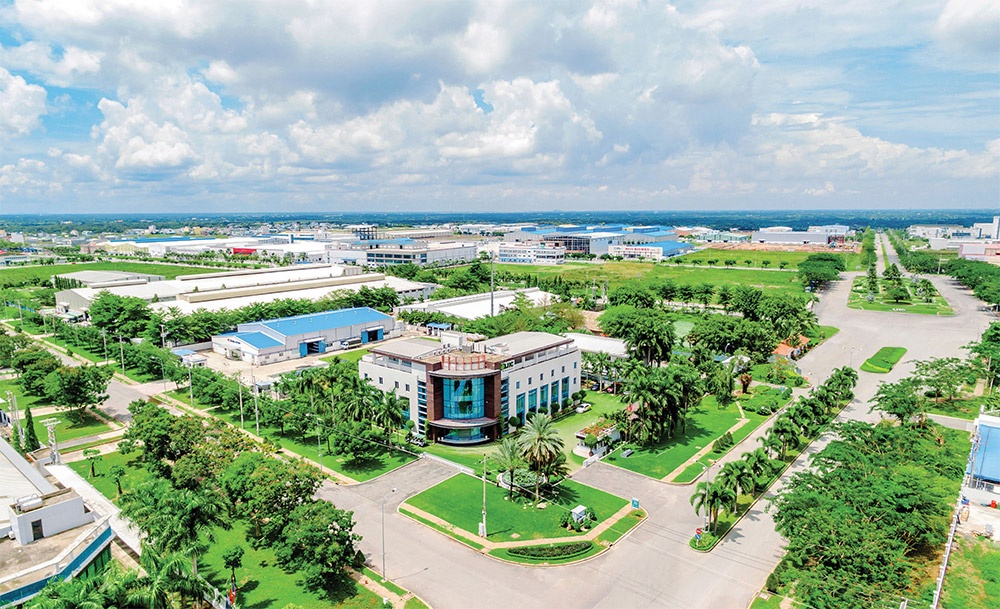 |
| Along with financial constraints, developers have to take into acccount ESG criteria and circular economic measures |
Potential solutions and pathways
To address the multifaceted challenges in developing eco-IPs, a comprehensive suite of potential solutions and pathways must be considered. Strengthening regulatory frameworks is paramount, necessitating the development of harmonised regulations that align national, regional, and local policies to create a conducive environment for these parks.
Implementing a robust system of incentives for sustainable practices and penalties for non-compliance can further encourage industries to adopt ESG and circular economy principles.
Financial mechanisms play a crucial role in mobilising the necessary resources. Encouraging public-private partnerships can leverage the strengths of both sectors to fund eco-IPs. Additionally, developing green financing mechanisms, such as green bonds and sustainability-linked loans, can provide industries with the financial support needed for sustainable initiatives.
Technological advancements are essential for the successful implementation of sustainable practices. Investing in research and development to create affordable and accessible sustainable technologies is crucial. Establishing technology hubs and innovation centres can facilitate the transfer and adoption of advanced technologies, ensuring that industries have access to the tools they need to implement circular economy practices and ESG criteria.
Capacity building and education are critical components of this strategy. Developing comprehensive training programmes to build the necessary skills for managing eco-IPs is essential. Conducting awareness campaigns to educate stakeholders about the benefits of sustainable practices can help drive adoption and foster a culture of sustainability.
Infrastructure development is another key area. Investing in infrastructure upgrades to support the requirements of eco-IPs is necessary to ensure their success. Developing efficient logistics systems to support the transportation, waste management, and distribution needs of these parks is also vital.
Finally, market development is crucial for the long-term viability of eco-IPs. Promoting the market demand for sustainably produced goods and services through awareness campaigns and incentives can help create a robust market for these products.
Highlighting the long-term competitive advantages of sustainable practices, such as cost savings and enhanced brand reputation, can motivate industries to adopt these practices, ensuring their sustainability and success.
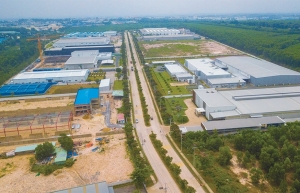 | Industrial parks within Vietnam keen on Taiwanese investment Industrial parks in Vietnam are moving to pick up a surge of Taiwanese investment. |
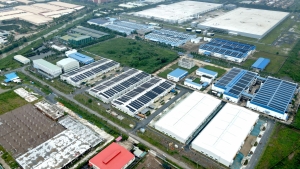 | Industrial parks increase supply of high-quality ready-built factories The strong development of the industrial real estate market has promoted the ready-built factory segment in the eyes of international and domestic manufacturers. |
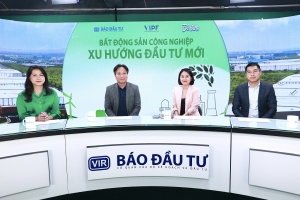 | Lower competitiveness affecting Vietnam's industrial parks The competitiveness of industrial parks in Vietnam is currently weak, at the same time as most need to evolve into specialised or green-oriented facilities. |
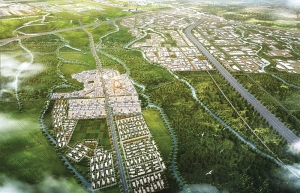 | Industrial parks strive to level up Industrial, service, and urban zones with smart technology application in operation and management of technical infrastructure will become hot development trends in the Vietnamese market, especially when it comes to some of the nation’s biggest foreign investors. |
What the stars mean:
★ Poor ★ ★ Promising ★★★ Good ★★★★ Very good ★★★★★ Exceptional
Related Contents
Latest News
More News
- CEO shares insights on Phu My 3 IP’s journey to green industrial growth (November 17, 2025 | 11:53)
- Business leaders give their views on ESG compliance in industrial parks (November 15, 2025 | 09:00)
- Industrial parks pivot to sustainable models amid rising ESG demands (November 14, 2025 | 11:00)
- Amata plans industrial park in Ho Chi Minh City (November 04, 2025 | 15:49)
- Businesses honoured for building a green future at VIPF 2025 (October 30, 2025 | 13:00)
- Vietnam’s growth formula evolves as high-tech and green industries take lead (October 30, 2025 | 08:34)
- Building Vietnam’s green industrial future: materials, mindset, and resource efficiency (October 29, 2025 | 20:00)
- Vietnam navigates complex landscape to accelerate strategic FDI (October 29, 2025 | 19:00)
- SLP charts strategic path through Vietnam’s industrial real estate market (October 29, 2025 | 18:06)
- VIPF 2025 highlights Vietnam’s evolving real estate landscape (October 29, 2025 | 18:03)

 Tag:
Tag:





















 Mobile Version
Mobile Version